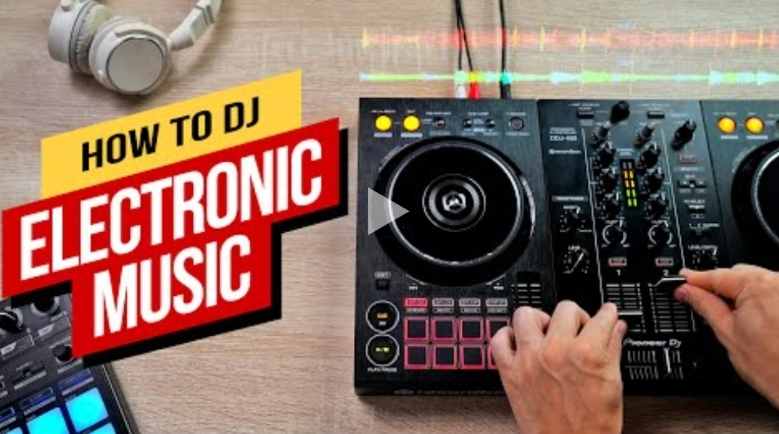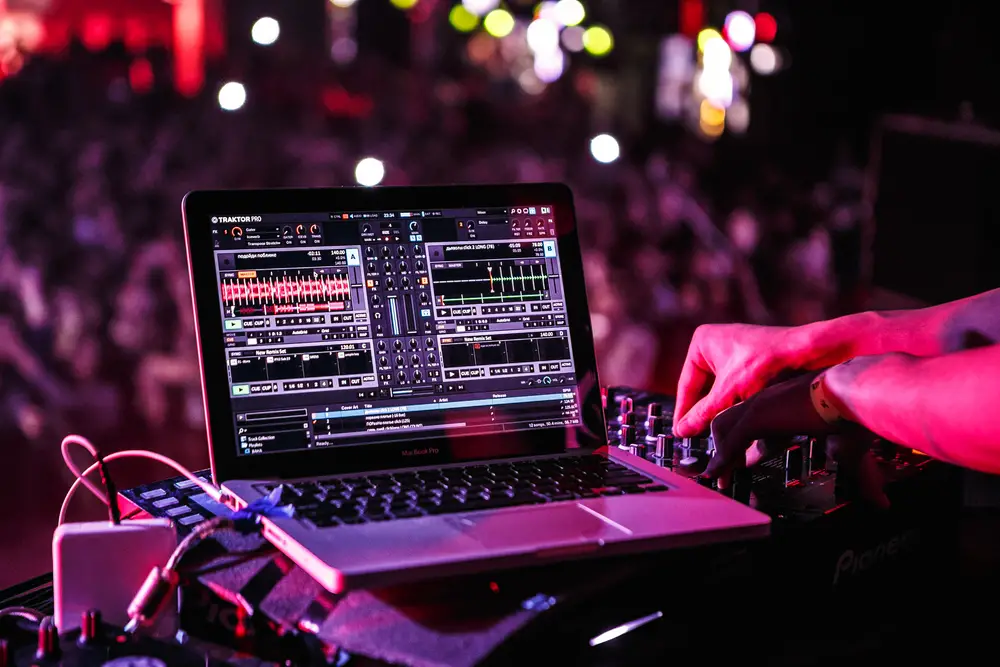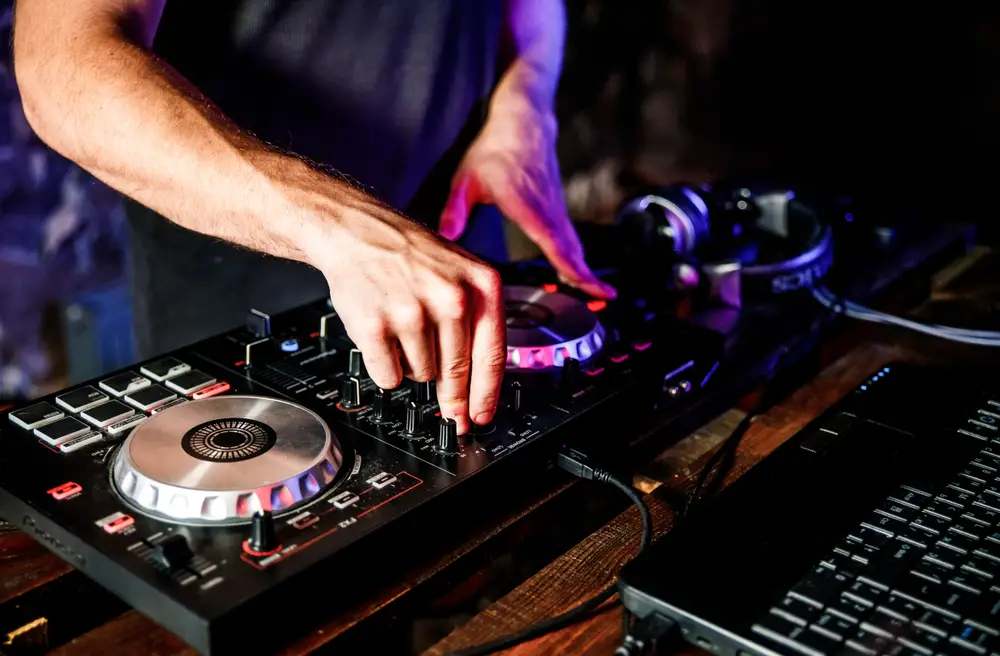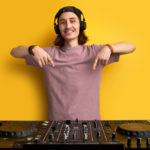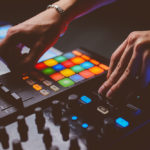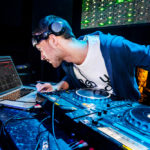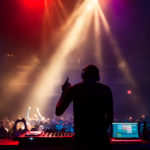For over 40 years EDM has hit the airwaves, and from it, sub-genres like Techno, House, and Dance-pop have evolved.
But what about EDM itself? Well, thanks to EDM being so bass-heavy, it’s actually one of the easiest genres to learn how to mix.
EDM stands for Electronic Dance Music and is one of the most popular dance genres around at the moment. Although it kinda covers all electronic music, it usually refers to high-energy, bass-heavy tracks.
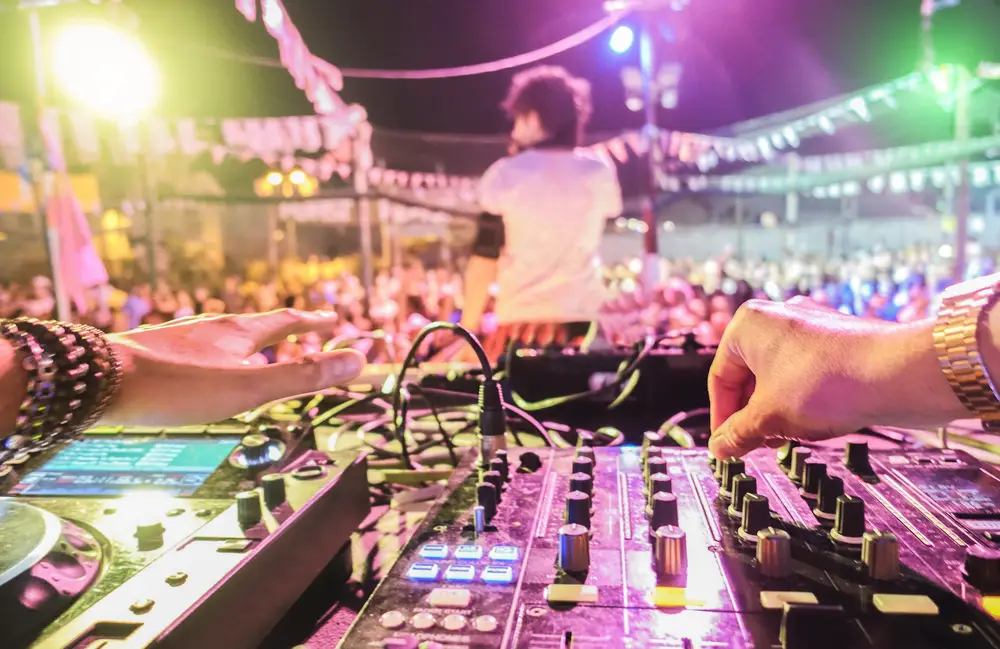
How Do DJs Learn EDM?
One of the easiest ways to learn is to immerse yourself in the EDM culture. One way you can do this is by seeing or attending some really high-energy and entertaining sets by some of the top EDM performers.
Whilst there, try not to get too into the party, but spend as much of your time listening to the mixes and tracks that are being used. This will really help you understand how these DJs construct their sets, and what really gets the crowd hyped.
There’s a lot you can learn about EDM DJing just by going to watch DJs perform.
Watching EDM DJs
Whilst this won’t be possible if you’re watching a big-name DJ, at smaller clubs you should be able to get right up close to the DJ booth. From close up, you will be able to see how they use their equipment, control the atmosphere and energize the crowd.
When there’s a particularly large crowd around the booth, more often than not, most of those people are watching, hoping to learn whilst watching the performance.
In the EDM scene, people who are the most serious about DJing and who learn from performing DJs are known as “heads”.
As an EDM DJ, you need to stay on top of new music, so as well as watching performing DJs in person, you need to keep track of DJs online too. Find some DJ artists that you like on SoundCloud, Mixcloud, and YouTube.
Subscribe to their accounts so that you’ll get notified when they release new music and mixes.
Record Your Practice Mixes
As mentioned earlier, EDM is one of the easiest genres to learn how to mix, and one of the fastest ways to improve is to record your practice sessions.
These recordings won’t necessarily be watched by anyone else (unless you think they’re good enough to post online), but they’re pretty useful to watch and listen back to, so you can see what works and doesn’t work in your mix or performance.
This can be a great habit to develop, as you can apply anything you need to develop to your next practice session. One of the best ways to accelerate your learning is knowing what’s working and what’s not.
What Is Needed To DJ EDM?
To become an EDM DJ, you’ll need to get your equipment first. Your setup will include a laptop, DJ software, and speakers. You can also add mixers and controllers to your setup. These are particularly helpful for mixing and can make performing live easier, as you’re not forced to use only your mouse and keys.
For EDM DJing, one of the most important parts of your setup is the DJ software that you use. Bear in mind that this isn’t the same kind of program that you’ll use to produce EDM music, but a program that is specifically designed for mixing music live.
The most popular DJ software in the States at the moment is Serato DJ, but that doesn’t necessarily mean you have to use it too. Other giants of the industry include Virtual DJ, Pioneer Rekordbox, Native Instruments Traktor Pro, and Mixxx.
There isn’t one program that’s better for EDM than the rest. They all, more or less, do the same thing, but they do go about it in different ways. You just have to experiment a little bit on free versions of the software and see which ecosystem feels more natural to you.
Do bear in mind, though, that DJ hardware is usually built from the ground up to support a particular DJ software, which is why a lot of controllers arrive in a bundle with a certain program. For example, this awesome RANE ONE Controller comes with Serato DJ Pro.
A lot of the time, it’s not that your hardware won’t work at all with other programs, but, usually, to unlock your gear’s full potential, you should combine it with the corresponding software.
So, if you already have some hardware, I recommend choosing the software it’s designed to be used in conjunction with.
If you want to start producing your own EDM, you’ll need a DAW (Digital Audio Workstation), which is essentially a program designed for recording and producing music.
Ableton Live is considered the industry standard for EDM — it’s the software that Skrillex uses to create his music. In fact, Ableton actually has some pretty fleshed-out mixing features, so you could both create EDM and mix it during a set.
Other useful programs that are great for making EDM are Apple Logic Pro and Image Line’s FL Studio. Some software can be pricier than others, so make sure you do some research before choosing one.
Just make sure whichever software you choose works well with your laptop (either Windows or Mac).
If you want to start EDM DJing (or any kind of DJing for that matter), you’ll need a quality pair of over-ear headphones. You don’t need to spend a lot of money, but your headphones should be comfortable, and be able to isolate music well.
Having good-quality headphones will help you with cueing tracks, so you’ll need to be able to hear a song through headphones to decide when to start playing through speakers.
You’ll also want to get a decent pair of monitor speakers. Again, you don’t need to spend a lot of money as these are more for use at home whilst you’re practicing performances.
Most venues will have super stereo systems anyway, so there’s no need to spend a lot on high-quality industry speakers.
Where Do EDM DJs Get Music?
It’s important to know where to get EDM tracks and keep on top of new releases. Luckily, there are a lot of websites that are geared specifically towards DJs and EDM.
These have thousands of MP3 files you can download, just make sure to listen to the songs before you purchase them so you can make sure they’re good quality and don’t sound grainy in any way.
Two of the biggest EDM providers are Beatport and Juno. A lot of professional DJs use these sites to get their music, and you can purchase the music in various file formats. You can also look on iTunes.
It can, however, be pretty expensive to buy a lot of tracks regularly. A lot of DJs are members of a DJ record pool. These are great ways to get access to an array of tracks at an affordable cost.
Being part of a record pool is also a useful way to discover new music. Not only can you see the latest releases, they also have charts for the most popular tracks. Some individual DJs even curate their own charts.
Some websites even provide free EDM samples, which is perfect for if you’re just starting to mix and don’t want to spend too much on purchasing music.
How To Develop Your DJ Skills
Once you have your setup made, you’re ready to begin learning to mix EDM music. There are tons of great YouTube tutorials for mixing and producing EDM, but one of the best ways to develop as a DJ is to just get stuck in. Here are some tips for honing your DJ skills.
Learn To Use the Software By Experimenting
The best way for you to learn all of the things your DJ software is capable of is to just experiment and play around by trying out different tools. This will help you become more familiar with the program.
If you are a visual learner, watching online videos will help. Also, don’t forget to check out articles if you learn better through reading.
Practice Transitioning Between Songs
In order to create a smooth transition, you need to pay attention to the tempo of each song so that you can match them seamlessly. It’s always best to choose a song with a similar rhythm to start playing next as you’ll be able to fade them in and out easily.
Your DJ software will help you learn how to transition between songs, but feel free to play around with different songs to find which ones flow nicely together.
Use EQ To Make Your Mixes Sound Better
EQing, otherwise known as equalizing, can help boost or reduce certain tones in your music which will help create the sound you want. Before you EQ, listen to your track and try to pinpoint any elements that you want to change.
For example, that can be cutting any sounds you don’t like or exaggerating ones you do.
When you first start EQing, make small changes such as slightly boosting the sound to see how it alters the track.
Study EDM Artists
Studying DJs can really inspire you, and you’d be surprised how much you can actually learn from them. Find EDM DJs who work you really admire, or go to a live performance to watch them in action.
Listen carefully to what songs they choose and how they switch between tracks. Also, pay attention to how they maintain the crowds’ excitement and energy throughout.
Use Online Resources
YouTube is a great platform to learn just about anything, and there’s plenty on there for EDM mixing and producing. It can help you figure out how to use your DJ software and how to create a unique mix. It’s also a great visual tool that you can easily follow along with.
It’s also worth checking out forums, as more often than not someone has already answered the question to the problem you’re facing.
Easy EDM Mixing Techniques
Here are three of the best EDM mixing techniques.
Loop Tightening
Loop tightening involves the DJ activating a loop on the outgoing track, just before the drop. For example, have both tracks playing in phrase, as it builds towards the moment when both tracks will drop. Activate a one-beat loop just before they both tracks drop.
Press the loop out button to change the loop endpoint, and move the jog wheel to tighten the loop. As the other track continues to build towards the drop, tighten the loop until a note forms, and add a slight amount of reverb to exaggerate the sound.
Remove the looped track just as the other track drops.
Drop Looping
This is pretty similar to loop tightening and requires two tracks building towards a drop. Just like before, you want to have a one-beat loop that is activated just before the drop.
Instead of tightening the loop, however, you’re going to use the crossfader to stab the loop in and out of the second track’s drop.
Drop Swap
Once again you need two tracks playing in phrase, allowing both to play at full volume through the breakdown. Pull out the first track just as the drop of the second happens. To add some extra flair, perform vocal stabs from the outgoing track using reverb and hot cues.
We hope you love the products we recommend. We may collect a commission if you purchase through one of our links. This doesn't cost you anything extra. If you do, thank you! As an Amazon Associate, I earn from qualifying purchases.

